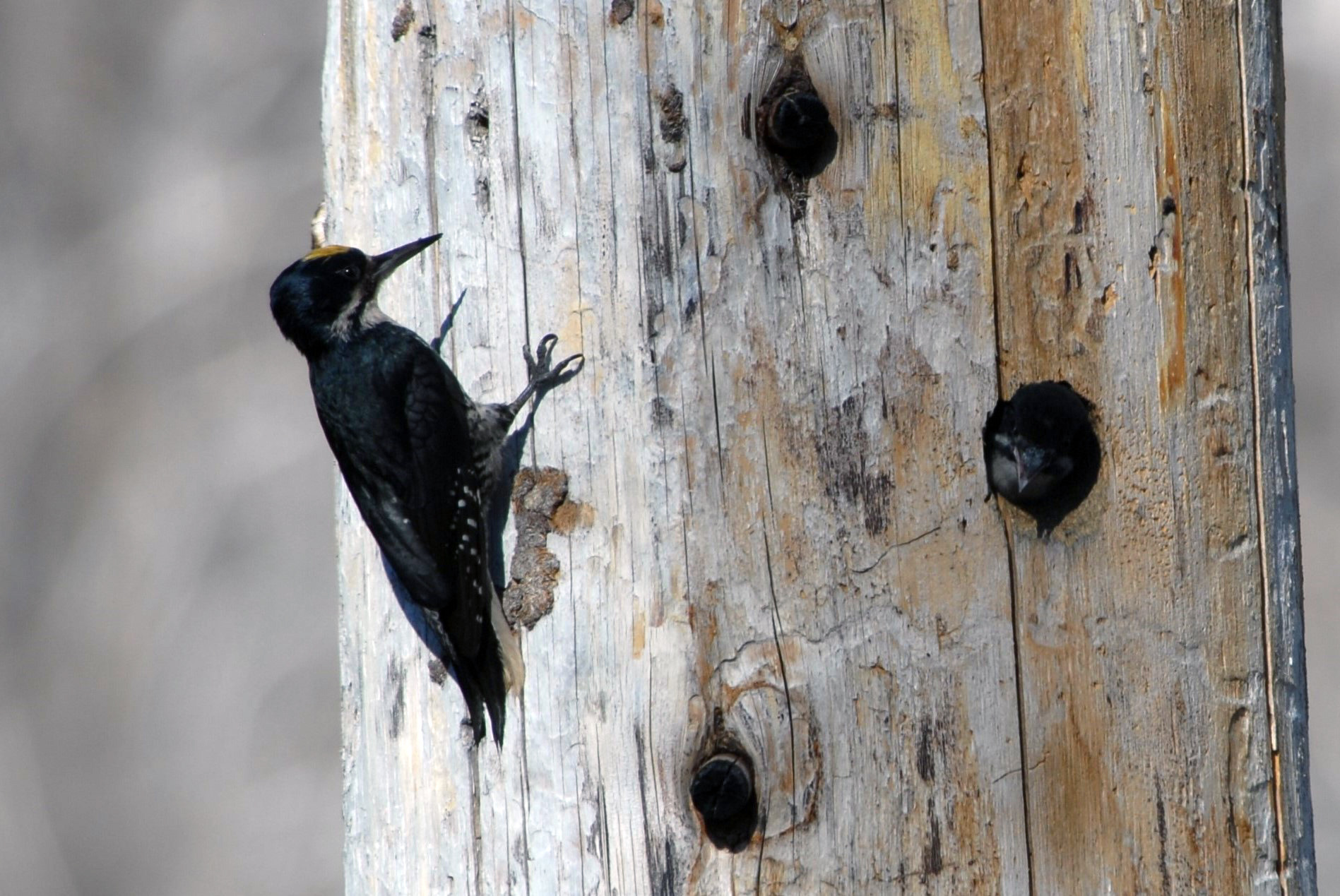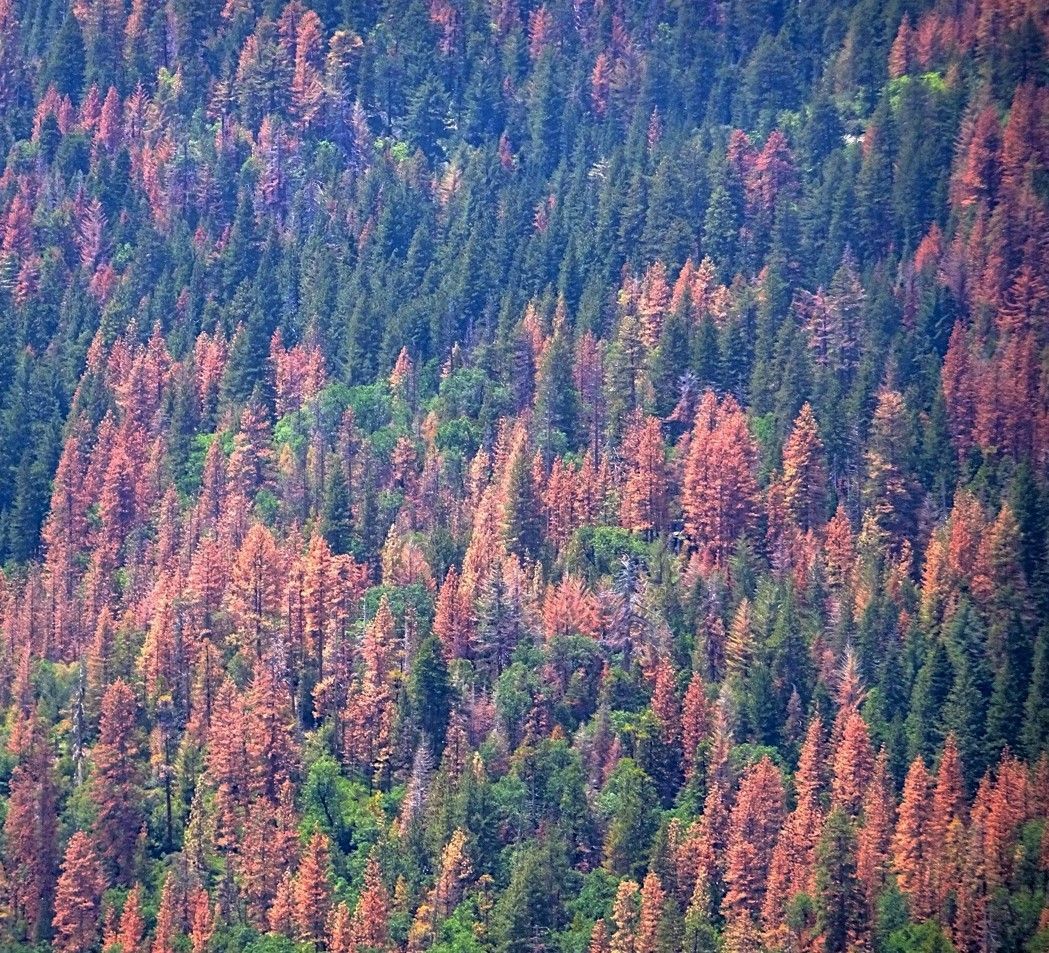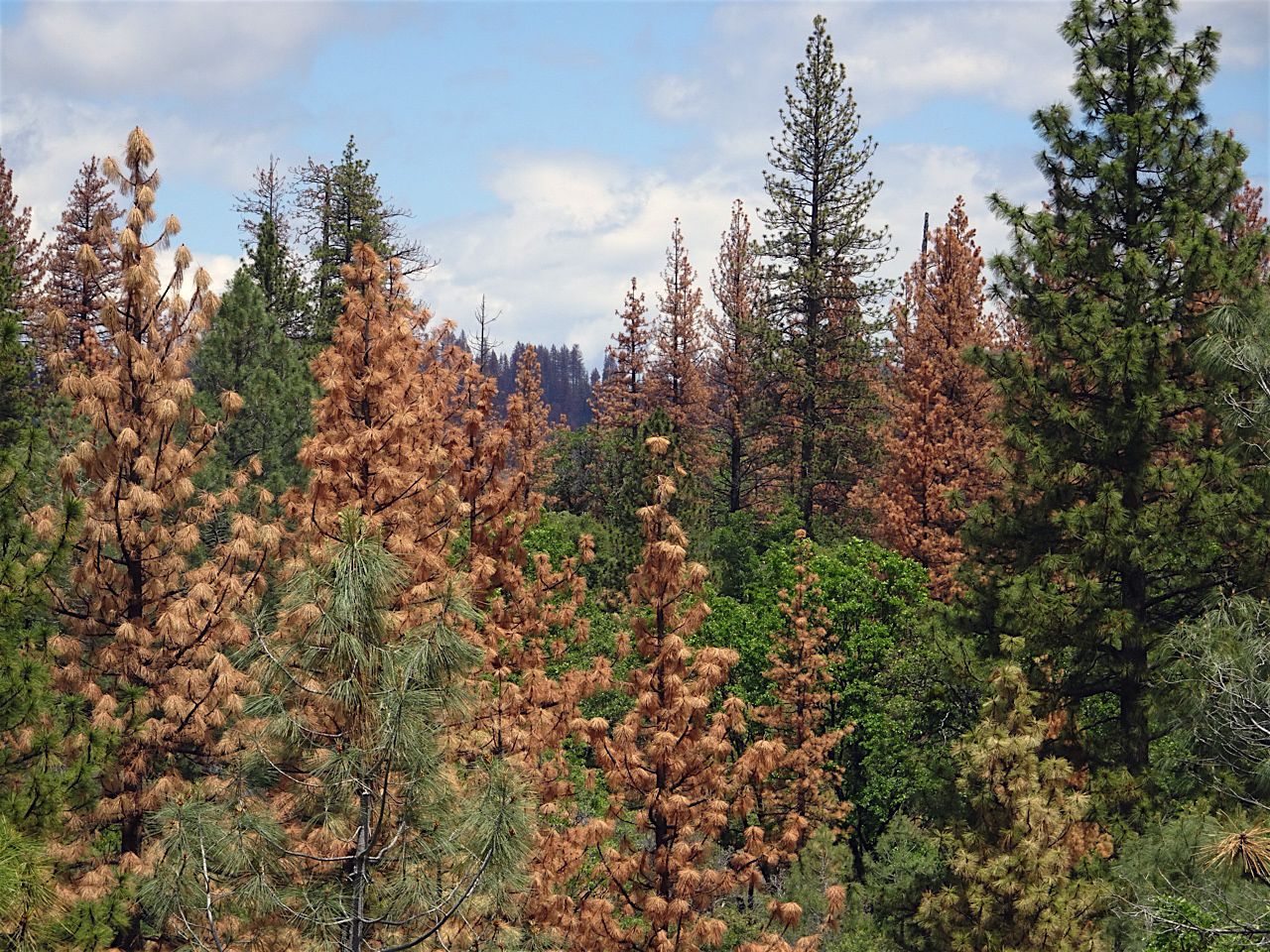

By Douglas Bevington
In California, dead trees are big news. In June, the U.S. Forest Service reported that 66 million trees had died since 2010 as the state has experienced a prolonged drought. Drought stress has weakened trees’ natural defenses to native bark beetles, resulting in a pulse of tree mortality. Yet amid all of the media coverage of the tree mortality, there has been little mention of the ecological importance of dead trees.
Dead Trees are Vital
Dead trees can remain standing for decades or more and a standing dead tree—known as a “snag”—provides great habitat for wildlife. Birds and mammals make their homes in openings carved within snags, while wood-boring insects that feed on snags provide the foundation of the food chain for a larger web of forest life, akin to plankton in the ocean.
With so much life abounding, it doesn’t seem right to call a snag “dead.” We commonly associate that word with meaning the end of one’s useful life and yet when a tree becomes a snag, it actually reaches a pinnacle of its beneficial role in the ecosystem. In other words, snags are a vital and vibrant part of the forest.
When many snags are created together in what is known as a “snag forest,” it produces some of the highest levels of native biodiversity of any forest type. Some forest animals, such as black-backed woodpeckers, depend on finding places with large swaths of snags. Unfortunately for them, unlogged snag forests have become quite rare.
The Deficit of Dead Trees
From the perspective of the timber industry, a snag in the forest is a waste, so timber companies and the Forest Service have spent decades cutting down snags as quickly as possible. As a result, there is now a significant lack of snags in our forests and this shortage is harming woodpeckers, owls and other forest wildlife. For them, the recent pulse of snag creation is good news.
At first glance, 66 million dead trees may seem like a very large number, but it is important to remember that there are 33 million acres of forest in California, so the total effect of the recent pulse of tree mortality has been to add an average of only two snags per acre. To put that number in perspective, forest animals that live in snags generally need at least four to eight snags per acre to provide sufficient habitat and some species require even more snags. For example, California spotted owls use forests with eight to twelve snags to nest and rest and they prefer even higher levels of snags in the areas where they gather their food. And black-backed woodpeckers depend on snag forests with at least several dozen dead trees per acre. These points and many others were addressed in a letter from scientists to California Gov. Brown in February.


Cashing in on Fear of Fire
Despite the ecological benefits from the recent pulse of tree mortality, logging advocates have been eager to cut down the snags. In attempting to sway the public to support large-scale logging, they have not highlighted the wildlife habitat created by these snags or the overall snag deficit, but instead they have stoked fears that dead trees will cause severe wildfires. This claim is generally presented by portraying the trees only as “fuel” for fire. Depicting trees solely as “fuel” is a simplistic and misleading approach that reduces the natural complexity of the forest to a single dimension, resulting in erroneous assumptions about what really occurs.
In fact, dozens of published scientific studies of what actually happens when beetle-affected areas burn show that dead trees do not cause severe fires. One recent study even found that areas with tree mortality burn at lower severity than green tree forests. Dr. Dominick DellaSala of the Geos Institute recently published a synthesis of this research and concluded, “There is now substantial field-based evidence showing that beetle outbreaks do not contribute to severe fires nor do outbreak areas burn more severely when a fire does occur.”
The results of the field research are inconvenient for those who try to use tree mortality as a justification for more logging. For example, U.S. Secretary of Agriculture Tom Vilsack, who oversees the Forest Service, made no mention of these studies in his June press release about the California tree mortality. Instead, he falsely claimed that the tree die-offs “increase the risk of catastrophic wildfires” and then he used that claim to lobby for increased funding for his agency.
The biomass power industry in California is also trying to cash in on this fire scare regarding dead trees. Biomass power facilities generate electricity by burning trees and other vegetation. This process is remarkably inefficient, with biomass burning facilities contributing to global warming by emitting more carbon per unit of energy produced than coal or natural gas facilities. (Moreover, in contrast to biomass power, renewable energy sources that don’t burn carbon—such as roof-top solar—have no emissions). Biomass power is also economically inefficient, requiring substantial taxpayer and ratepayer subsidies, as well as regulatory loopholes, to keep biomass facilities in business. Thus, the current use of fear of fire to try to justify subsidized logging of snags to fuel biomass facilities is bad news for the climate and taxpayers, as well as for forest ecosystems.
A New Understanding of Forest Diversity
Rather than allowing logging proponents to exploit fear and misinformation about fire, we have a collective opportunity to learn from the current pulse of tree mortality and develop a greater understanding of the full diversity of California’s forests. Dead trees, including large patches of snags, are a vital part of the forest. We should appreciate them, along with the natural processes that create them, such as beetles and wildfires. While forest protection efforts have historically focused on green trees, forests come in a variety of colors that also deserve protection, including trees with brown needles and trees with blackened bark. Their diversity provides the basis for a diversity of forest life.
Douglas Bevington is the forest program director for Environment Now and the author of The Rebirth of Environmentalism: Grassroots Activism from the Spotted Owl to the Polar Bear (Island Press, 2009).

 233k
233k  41k
41k  Subscribe
Subscribe 